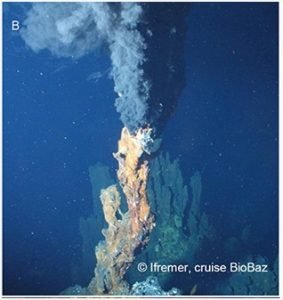Prelims – 4th Nov 23
Hydrothermal Vent
- Hydrothermal vents are places where seawater exits cracks in the sea floor, having been super-heated and enriched with metals and minerals deep in the underlying bedrock.

- They are an example of an ecosystem based on chemosynthesis, where life is sustained by energy from chemicals rather than energy from sunlight.
- The discovery of an abundance of life around deep-sea hydrothermal vents emitting hot and toxic fluids demonstrated that animals and other organisms could thrive in the dark, cold and high-pressure deep oceans.
- Mussels are among the most studied animals found near hydrothermal vents. Scientists discovered that mussels rely on a close, living relationship—a “symbiosis”—with bacteria for their nutrition.
- In this symbiosis, bacteria use chemicals from the hydrothermal fluid and seawater to produce organic compounds, while the mussels provide the bacteria with essential compounds and protection.

Central Adoption Resource Authority (CARA)
- CARA is a statutory body of Ministry of Women & Child Development. It functions as the nodal body for adoption of Indian children and is mandated to monitor and regulate in-country and inter-country adoptions.
- CARA is designated as the Central Authority to deal with inter-country adoptions in accordance with the provisions of the Hague Convention on Inter-country Adoption, 1993, ratified by Government of India in 2003.
- CARA primarily deals with adoption of orphan, abandoned and surrendered children through its associated /recognised adoption agencies.
Hague Convention on the Civil Aspects of International Child Abduction
- Hague Convention is a multilateral treaty which came into existence on 1st December 1983.
- It is an international treaty to ensure the prompt return of the child who has been “abducted” from the country of their “habitual residence”.
- The Convention applies to children age under 16 years.
